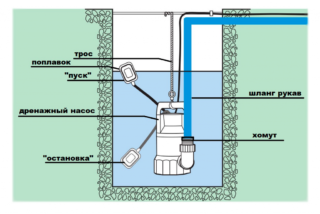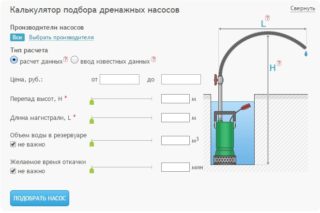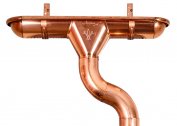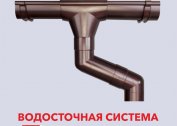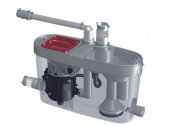Drainage pumps are in great demand, due to the versatility of the equipment. The main task is to perform forced pumping of wastewater and rainwater from reservoirs, marshes, ponds, etc. There are many models of drainage pumps with float of various modifications, some of them are low-power, others are designed for industrial work.
Application area
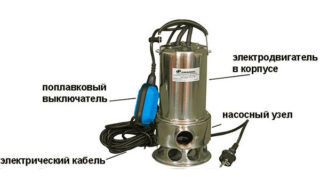 Most of the suburban and private houses are equipped with autonomous water supply and sewage systems. The main working element of the entire network is drainage pumping stations. The durability of the building depends on the power and performance of this segment.
Most of the suburban and private houses are equipped with autonomous water supply and sewage systems. The main working element of the entire network is drainage pumping stations. The durability of the building depends on the power and performance of this segment.
Using a pump, the main purpose of which is to perform drainage, you can implement the following list of tasks in everyday life and industry:
- pumping liquid from natural swamps, water bodies;
- pumping liquid from flooded places or premises after heavy rainfall, raising groundwater levels, as well as melting snow;
- pumping contaminated liquids from one tank to another;
- pumping water from pits and trenches that were created during construction;
- cleaning the bottom of wells and mines from pollution;
- drainage of plots in the lowlands.
The equipment is quite versatile in use, because it allows you to perform a large amount of different work.
The principle of operation and device
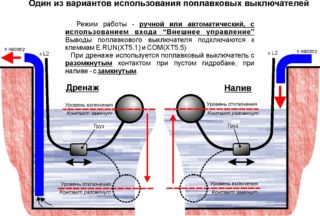 All equipment, despite the varieties of modifications, have the same principle of operation and are equipped with a float switch, rotor, motor, discharge chamber, stator and impeller.
All equipment, despite the varieties of modifications, have the same principle of operation and are equipped with a float switch, rotor, motor, discharge chamber, stator and impeller.
Power, performance and lifetime depend on the quality of the seals, which are designed for air tightness of the electric motor. In expensive models, they are made of ceramics, and the case is made of cast iron or stainless steel, which are characterized by high resistance to mechanical stress and the formation of corrosion (rust).
The pumping station is controlled by a float switch, which automatically starts and stops the drive. It is a plastic box, inside of which there is an electric switch and a steel ball.
The principle of operation of a submersible pump with an internal float is that the pumped liquid enters the functional chamber, where, under the influence of pressure and rotations of the moving wheel, it rises, cooling the drive.
All drainage pumping stations with an automatic float switch are divided into several groups depending on their location.
- The submersible pump has a sealed housing, this allows you to operate it in a humid environment. During operation, almost silent, all models are powerful and productive. If the integrity of the case is broken, it is extremely difficult, and sometimes even impossible, to return the unit to operation. Internal parts are often dirty, so they must be washed regularly.
- Vertical models have a vertical float switch. In automatic mode, pumps liquid from enclosed spaces. As a rule, such equipment is used to drain pipelines that have failed. They are also used as ordinary drains.
- Units with an internal float include PVC pipes that are immersed in the well, the body must remain on the soil surface. The advantage of the pumping station is the ease of installation, use and maintenance. But during operation, this kind of drainage pump makes a lot of noise.
- Fecal pumps pump liquid from cesspools and septic tanks. The advantage of the equipment is high power and productivity. The device is equipped with an additional part that crushes the waste. Fecal pumps are surface and submersible.
The device of the drainage pump with a float for all varieties may vary slightly, therefore, the connection diagram will also have differences, so you first need to read the operating instructions or consult a specialist.
Features of installation and use
Before installing a drainage pump for dirty water with a built-in float switch, it is necessary to measure the level of current that the unit spends per unit of time. It must be below acceptable. Experts advise installing directly in the recess.
To install, you need a small weight (it is included in the kit) and a cable:
- The load is attached to the cord, after which it is necessary to determine the course of the float.
- Using the latch it will be fixed.
- The cable is fastened from the outside.
- The circuit breaker is connected to the pump.
Installation work should be carried out only on the condition that the likelihood of a float hanging or catching inside the tank, well, etc. is excluded. If at the same time you need to place several floats at once, they are placed in a special bar. For this, a plastic pipe is used.
For proper installation, you will need to set, adjust and place the floats so that their working radii do not intersect.
The number of float switches used depends on the model of the drainage pump and the installed control panel. The number of starting switches and the number of additional elements also play a large role.
Criterias of choice
To purchase a drainage pump, which due to technical limitations will not be useless, it is necessary that it meets the requirements and effectively fulfill the tasks assigned to it. When buying, take into account the following nuances:
- It is not necessary to purchase a pump that is too powerful, this is reflected in the amount of electricity consumed. Oh will heat up quickly. When idling, parts wear out faster. Typically, drainage pumps designed for domestic use operate on a regular 220 Volt network, with a capacity of 400 watts.
- It is necessary to take into account the coefficient of the created fluid pressure at the outlet. It is customary to measure it in meters of water, in bars or technical atmospheres. Pressure should provide not only the rise of water to the surface, but also help to overcome the hydraulic resistance of horizontal pipes.
- Maximum immersion depth of deep drainage pumps.
- The productive water station depends on the speed of pumping water.
- Not all equipment is designed for pumping liquids with solid impurities of large sizes and high concentrations.
When purchasing equipment, you need to carefully study the features of operation and maintenance. The following materials are used for the production of modern pumping stations:
- Plastic is the most budget option, the life of which is relatively short.
- Stainless steel is a durable material resistant to mechanical stress. Service life, as a rule, exceeds 10 years.
- Cast iron is a high-quality material, but is used less often for the manufacture of cases, since it is heavy and expensive.
Most often, drainage pumps are made with a plastic casing and a steel wheel. Such models combine high quality and affordability. Recently, pumps with working blades made of polymer were presented on the market, they are even cheaper than their counterparts.
It is recommended to purchase drainage pumps with a float from authorized representatives or in specialized large stores. Making a purchase, they check the availability of components, documentation and study the conditions of the guarantee.
